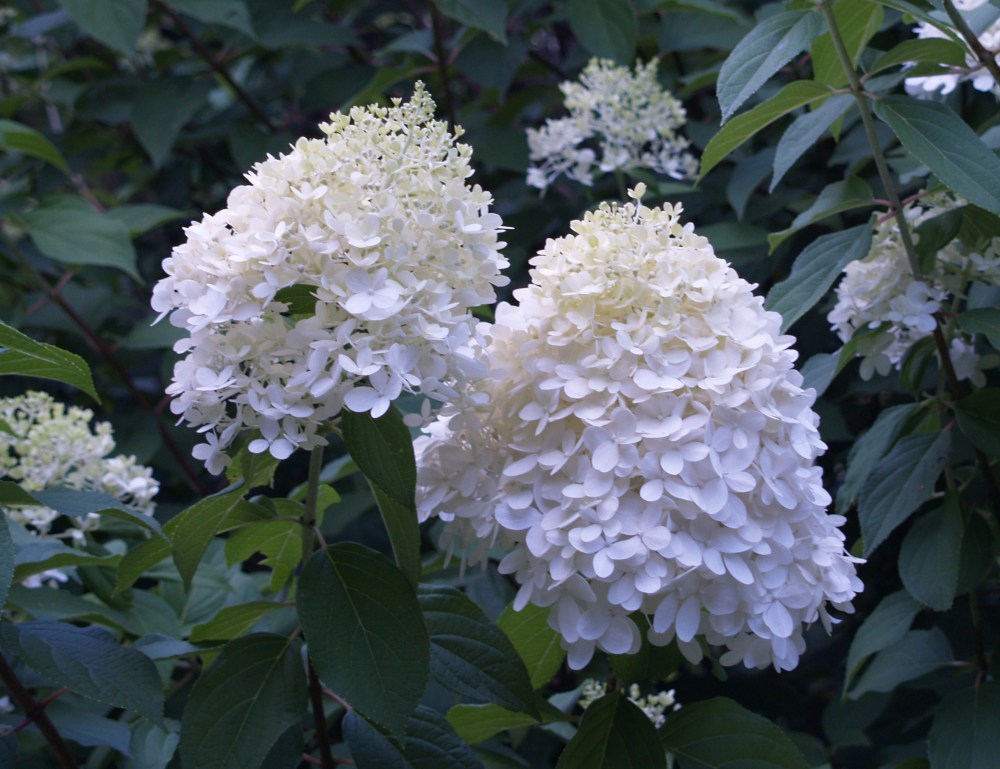Since the beginning of June there have been an inordinate number of days above ninety degrees, and perhaps a day or two over one hundred, horrid conditions for the garden and gardener alike. Today there is an occasional puff of a breeze, so it is arguably more comfortable (less uncomfortable?) than yesterday, but not nearly a day to enjoy wandering about the garden.
With the prolonged heat I have noticed a bit of powdery mildew on the native dogwoods and a few of the dahlias (inevitable with high heat and humidity), and I have seen more Japanese beetles in the garden than in the past few years. I’ve found that the damage they inflict is usually minor, and temporary, and though there are plenty of products intended to prevent or cure these maladies, I’m reluctant to bother spraying to prevent such a minor and short lived nuisance.
Oddly, the most extensive beetle damage in my garden is suffered by Ostrich ferns that have spread by rhizomes into full sun, and those that are shaded suffer very little. There is some minor injury to the shrub roses, but only to a few out of many, and why the beetles bother one rose and not another, and one cherry and not the other is a mystery that I haven’t an answer as to why.
If powdery mildew should become more severe I am likely to prune the dahlias in half, sacrificing a few blooms, and the odds are that the new foliage will not be troubled because the weather has changed to some degree, cooler or drier, but certainly not the same as when the mildew developed. Earlier in the season I failed to prune the dahlias when I should have, so they are quite tall, and beginning to flop about, so cutting them back will do some good beyond relieving the mildew problem. There is no remedy for the dogwoods, and fortunately the mildew is less severe, and it will only result in disfiguring the leaves with no real harm done.
The bigleaf hydrangeas look rather sad during the heat of the afternoon, and salvias and a few perennials that were planted earlier in the spring will perk up considerably with a thunderstorm or two. Of course we are at the point in the summer when the gardener wishes for a steady rain a day or two long, but as he knows it is unlikely to happen.
As gloomy as this might sound, much of the garden is in fine condition, in bloom and with vigorous foliage, bothered little by the heat and dryness. Shallow rooted perennials are stressed more easily than deep rooted trees and shrubs, and small trees and large evergreens provide some temporary shade through the day, so there are few parts of the garden that are exposed to the full brutality of the sun throughout the day.
The panicle hydrangeas, Tardiva and Limelight, are beginning to bloom and show no signs of heat related problems. They will be in peak bloom by late in July, with flowers lasting into September. Hydrangeas, both panicled and bigleaf (and Oakleaf, now past bloom), are wonderful shrubs for the summer garden, consistently lush and colorful, pest resistant and requiring an absolute minimum of care.
Tardiva and Limelight consume more space than you would expect, an area eight to ten feet across, and many of the bigleaf cultivars will grow only slightly smaller, but a garden with a blue flowering hydrangea (or three), an Oakleaf, and a panicle hydrangea or two will be splendid May through September, and never mind if the perennials have turned for the worse in the heat.